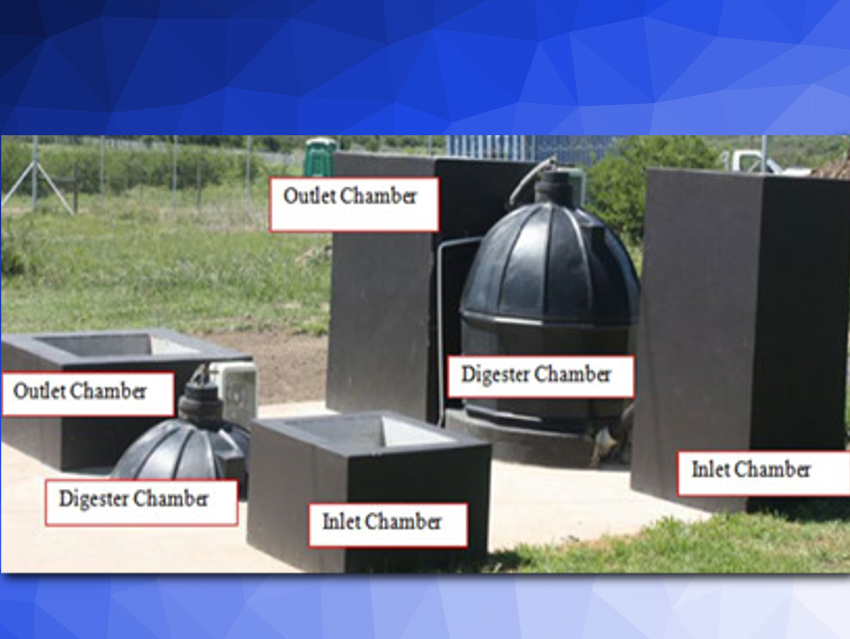To meet the increasing demand of energy, renewable sources such as biomass, solar, wind, and hydropower are needed. Since biomass is often derived from biological wastes, its use has the advantages of resource conservation and environmental protection. In the absence of oxygen, microorganisms break down the organic matter to produce biogas. This anaerobic digestion can also be applied industrially.
Among many parameters influencing the process, the temperature has the greatest effect on the final biogas yield. To study the impact of the air temperature on the temperature inside the digestion chamber, KeChrist Obileke, University of Fort Hare, South Africa, and colleagues compared two dome digesters, one placed aboveground and one underground (pictured).
Measurements of the methane and carbon dioxide production during the 18-day experiment showed that at different temperatures, different bacteria are active. They all process the substrate differently, leading to different biogas yields. As expected, biogas production is the highest at higher temperatures. The thermophilic bacteria process organic matter faster and thereby increase biogas production. But they are also very temperature-sensitive and require a stable temperature profile. The better insulation provided by the surrounding soil of the underground digester not only led to higher temperatures in general, but also to a more stable profile.
- Comparative Study on the Performance of Aboveground and Underground Fixed-Dome Biogas Digesters,
KeChrist Obileke, Sampson Mamphweli, Edson L. Meyer, Golden Makaka, Nwabunwanne Nwokolo, Helen Onyeaka,
Chem.Eng. Technol. 2019, 43, 68–74.
https://doi.org/10.1002/ceat.201900378
The article is part of a Chemical Engineering & Technology Special Issue on Monitoring and Process Control of Anaerobic Digestion Plants.




